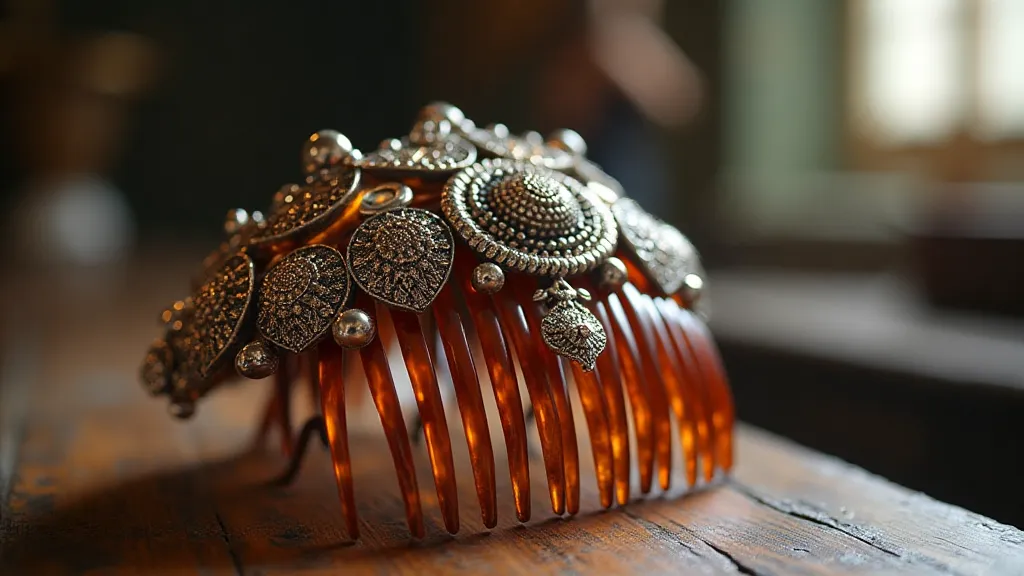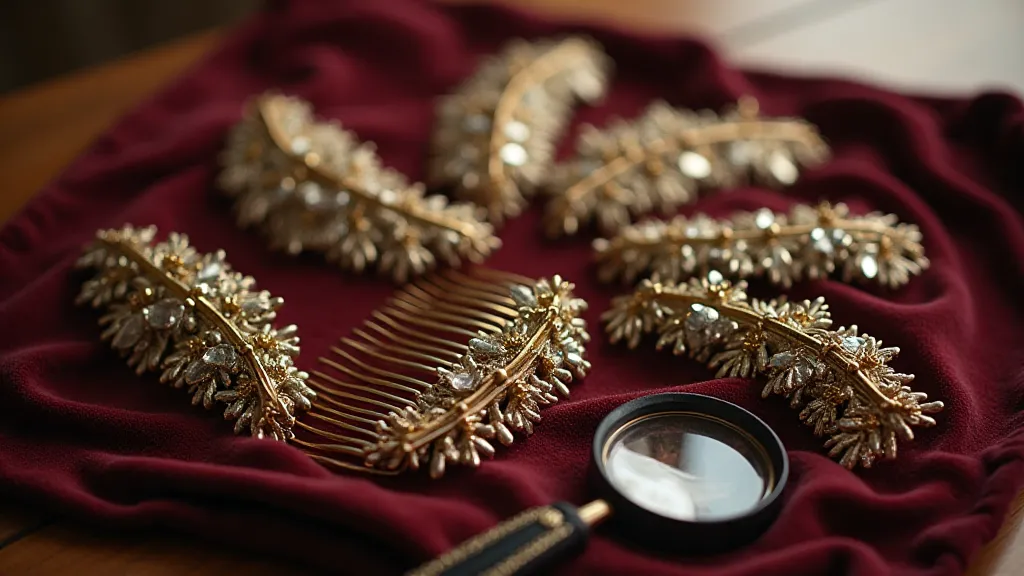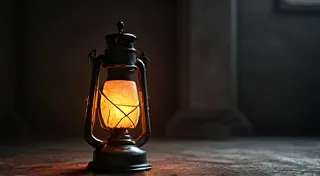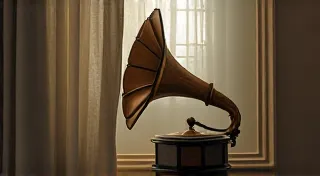From Palace to Parlor: The Journey of a Vintage Hair Comb Through Time
Imagine a tiny object, no larger than your hand, held within the elaborate hairstyles of women spanning centuries. A silent witness to whispered secrets, grand balls, and quiet moments of reflection. That object is a hair comb, and for a piece of antique hardware, it holds a surprisingly potent narrative power. Let's follow the hypothetical journey of one such comb, a delicate tortoiseshell piece, as it travels through time, its story interwoven with the lives of its keepers.
Our comb’s journey begins in the opulent court of Louis XV in 18th-century France. Crafted by a master artisan, its tortoiseshell shell gleams with a polished warmth, adorned with intricate silver filigree depicting floral motifs. This wasn't just an accessory; it was a symbol of status, a declaration of elegance worn by Madame de Valois, a lady-in-waiting known for her sharp wit and even sharper fashion sense. She likely secured her towering coiffure, laden with feathers and jewels, with this very comb. The air around her would have been thick with perfume and anticipation before a masked ball at Versailles, the comb’s silver delicately cool against her skin. Perhaps she confided a scandalous rumor to a suitor, a secret held close and reflected in the comb’s polished surface. We can almost hear the rustle of silk and the murmur of voices, the comb a steadfast presence in a whirl of extravagance.

The French Revolution, inevitably, brought a harsh ending to Madame de Valois’s world. Her belongings were scattered, her name erased from court records. Our comb, lost during the upheaval, resurfaced decades later in England. It entered the possession of a young woman named Eliza, a milliner’s daughter in London. Eliza's life was a stark contrast to the gilded existence of Madame de Valois. She toiled long hours creating hats and bonnets for the burgeoning middle class. But she possessed an innate sense of style and an appreciation for beauty. She recognized the comb’s intrinsic value, not just as an adornment, but as a piece of history. She carefully cleaned it, preserving what she could, and used it to add a touch of elegance to her own modest attire. The comb, once a symbol of aristocratic power, now signified Eliza’s quiet determination and her ability to find beauty amidst adversity.
The Victorian era saw a shift in hairstyles and fashion, and the materials used in hair accessories underwent a fascinating evolution. While tortoiseshell (often a misnomer for horn, traditionally from the ram's horn) remained a popular choice, other materials like jet, silver, gold, and various woods gained prominence. Understanding these materials and their historical significance is key to appreciating the artistry and value of vintage hair combs. For those keen to delve deeper into the materials used in creating these historical treasures, a further exploration of beyond the surface can offer a valuable insight.
The Victorian era witnessed a proliferation of styles, and the nuances of silver hair comb design were a reflection of the prevailing aesthetic tastes of the time. The intricate details and craftsmanship of these pieces tell a story of the era’s artistry and innovation. The designs moved beyond simple functionality to incorporate elaborate ornamentation and symbolic motifs. This period marks a significant turning point in the evolution of hair accessories.
The Victorian era saw a shift in hairstyles and fashion, but the comb’s enduring quality ensured its continued relevance. It passed through several hands, a pawn in estate sales and family heirlooms. It might have adorned the hair of a stern governess in a boarding school, or graced the head of a young woman attending her first social gathering. Each owner left an invisible mark, a subtle alteration to its story. Small chips might have appeared on the tortoiseshell, tiny scratches testament to the passage of time. These imperfections, far from diminishing its value, only added to its character and charm – a tangible history etched into its form.
The early 20th century witnessed a further evolution. The Art Nouveau and Art Deco movements embraced natural forms and geometric designs. While the comb wasn’s radically altered, it was carefully cleaned and displayed as a treasured antique. It became a conversation starter, a window into a bygone era. Perhaps a young girl, fascinated by the stories her grandmother told, would hold it in her hands, imagining the lives of those who had worn it before.

By the mid-century, the comb’s journey took a surprising turn. It found its way to a small antique shop in New York City. Here, amidst a clutter of forgotten treasures, it caught the eye of a collector, a man named Arthur. Arthur wasn’t interested in fleeting trends; he sought objects with history, with a story to tell. He recognized the comb’s pedigree – the exquisite craftsmanship, the subtle details that spoke of its aristocratic origins. He saw not just an accessory, but a time capsule, a tangible link to the past.
Arthur spent years researching the comb, meticulously tracing its possible history. He consulted experts, examined historical records, and pieced together fragments of information. He discovered that the floral motifs on the silver filigree were characteristic of a particular workshop in 18th-century Paris, adding another layer to the comb’s already rich provenance. While definitive proof remained elusive, Arthur’s research deepened his appreciation for the object, transforming it from a mere antique into a cherished piece of his personal history.
Interestingly, the evolution of hair combs isn’t just about materials and design; it’s also deeply intertwined with cultural and social shifts. The delicate interplay of styles and trends reflects a fascinating narrative of changing beauty standards and the evolving role of accessories in personal expression. For a deeper dive into the historical significance of silver in these creations, exploring silvered dreams provides an even more detailed perspective.
Furthermore, the collection and preservation of vintage hair combs is a growing passion for many. Understanding the nuances of identifying authentic materials and recognizing distinguishing characteristics is a vital component of responsible collecting. The value of a vintage comb is influenced by a complex set of factors, including rarity, condition, provenance, and historical significance.
Today, our little tortoiseshell comb rests in a custom-built display case, admired by visitors to Arthur's collection. It’s a testament to the enduring power of beauty and the fascinating stories that can be found in the most unexpected places. It’s a tangible reminder that even the smallest objects can hold a vast and compelling history. Consider the journey: from the opulent courts of France to the bustling streets of London, and finally to a quiet display case in New York City. It has been a silent observer of revolution, resilience, and enduring style.
For those captivated by the allure of vintage hair combs, the collecting journey can be as rewarding as owning a piece of history. Understanding the materials – tortoiseshell (often a misnomer for horn, traditionally from the ram's horn), silver, gold, jet, and various woods – is crucial. Recognizing hallmarks and maker's marks can help establish authenticity and provenance. The condition, of course, plays a significant role in value, although minor imperfections often add character. Restoration, when necessary, should be undertaken with utmost care, preserving as much of the original material as possible. Often, simply gentle cleaning and careful storage can be enough to maintain a comb's beauty for generations to come.

The journey of our little tortoiseshell comb is a reminder that objects are more than just things; they are vessels of memory, echoes of the past. And who knows what stories other vintage hair combs hold, waiting to be discovered and shared? The specific origins and usage of horn, bone, and other natural materials can be a captivating area of study; delving into the bone orchard is a fascinating way to uncover more about this often-misunderstood aspect of antique hair accessories.
Ultimately, each vintage hair comb tells a unique story, connecting us to a bygone era and offering a glimpse into the lives of those who once cherished them. They are more than just accessories; they are tangible links to our shared history, each one possessing its own distinct character and charm.





